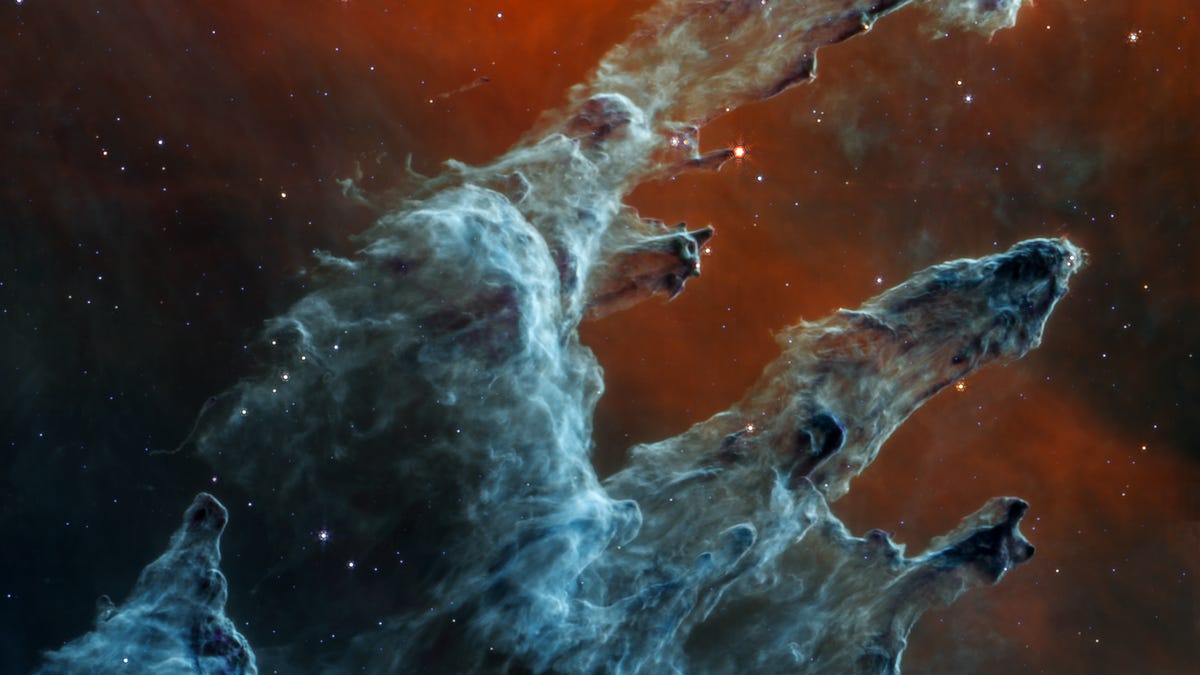NASA's Webb Telescope Captures Ghostly Image of 'Pillars of Creation'
Looking at this iconic star-forming region in the mid-infrared is like putting cosmic fog goggles on the agency's powerful telescope.

NASA's James Webb Space Telescope's mid-infrared view of the Pillars of Creation strikes a chilling tone.
New images from NASA's next-gen James Webb Space Telescope present views of the cosmos so clear and crisp, it's downright spooky. For Halloween this year, the space agency turned up the (mid infra-)red in a picture of the spectacular "Pillars of Creation" to give this remarkable star-forming region a darker, dustier tone.
The Pillars of Creation -- located within the sprawling Eagle Nebula some 6,500 light-years away -- first achieved astronomical fame when the Hubble Space Telescope observed it in 1995.
Then, it was brought back into the limelight as the 'scope revisited it in 2014, and last week, Hubble's successor Webb provided highly sharp, detailed views of the pillars, managing to peer through more of the area's obscuring dust than was previously possible. That image was produced by the machine's Near-Infrared instrument. However, as it turns out, Webb is also equipped to let the dust and gas themselves shine in their own ethereal way.
Switching to Webb's Mid-Infrared Instrument, or MIRI, provided the creepy observation of the iconic pillars we see above.
Viewing the scene in the mid-infrared brings out the dust that cloaks light from numerous stars shining through, sparkles more easily observed on other parts of the spectrum and highlighted in Webb's seminal image of the landscape, according to NASA.
The effect lends the whole scene a more ghostly feel, like a great shadowy hand reaching across the universe. The crimson hues highlighted by MIRI are enough to make you wonder if we're actually looking at the heavens or some place a little more ... hellish.
That red region near the top is where the dust is most cool and diffuse, and just like a storm cloud on Earth, the darkest grays in the pillars (or fingers) indicate the most dense clouds of dust.
Besides being creepy cosmic eye candy, this new view also provides more detailed data that will allow astronomers to construct more complete 3D models of this turbulent region where entire solar systems get their start.

